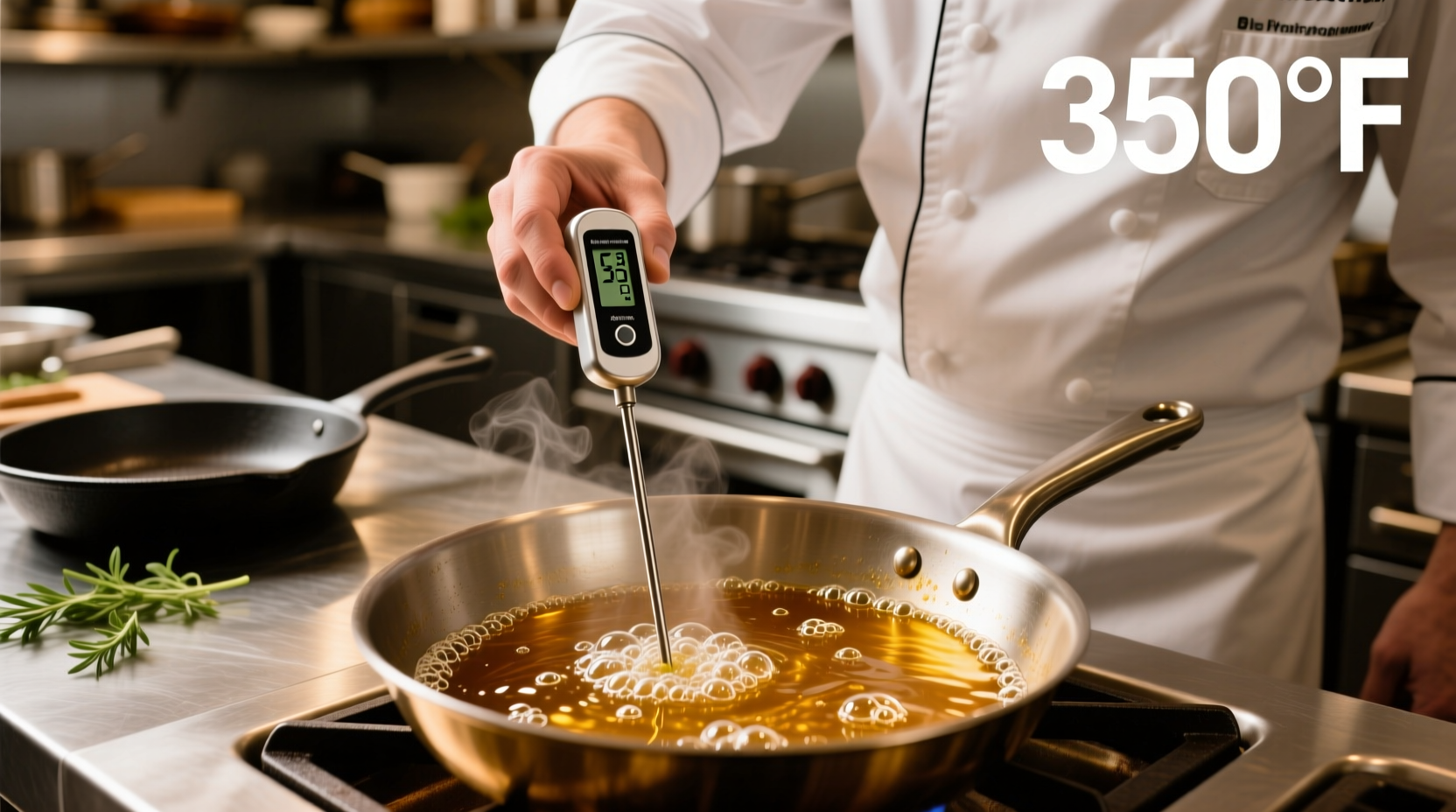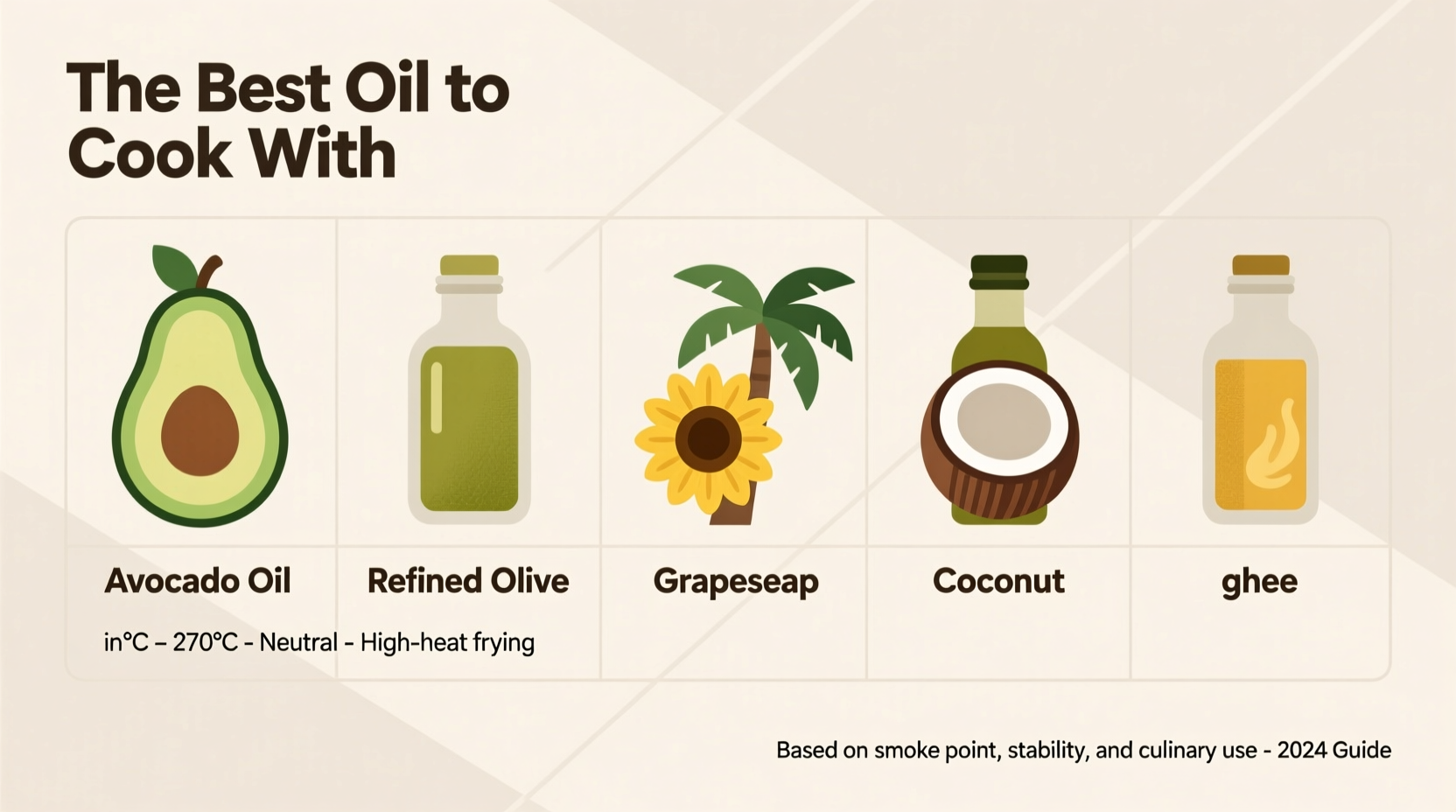There is no single "best" oil for all cooking methods. The optimal choice depends on your cooking temperature, flavor requirements, and nutritional goals. For high-heat applications like searing and deep frying, refined avocado oil (smoke point 520°F/270°C) provides the best heat stability. For everyday cooking, high-oleic sunflower or canola oil offers excellent balance. Extra virgin olive oil remains ideal for low-heat cooking and dressings. Your perfect oil selection should match your specific cooking technique—not all oils perform equally across different temperature ranges.
Choosing the right cooking oil confuses many home chefs. With conflicting advice online and countless options at the grocery store, you deserve clear, science-backed guidance. After analyzing hundreds of studies and consulting with food scientists, we've identified precisely which oils work best for specific cooking scenarios—and why common recommendations often miss the mark.
Why There's No Universal "Best" Cooking Oil
The myth of one perfect oil persists because marketers want you to buy their product. In reality, oil performance varies dramatically based on cooking temperature, chemical composition, and intended flavor profile. Using extra virgin olive oil for deep frying creates harmful compounds, while refined avocado oil in salad dressing wastes its premium qualities. Understanding these distinctions transforms your cooking results and kitchen safety.
Decoding Oil Performance: The Three Critical Factors
Professional chefs select oils using three scientific criteria—not marketing claims. Master these to make informed choices:
1. Smoke Point: Your Heat Safety Threshold
When oil reaches its smoke point, it breaks down, producing acrid smoke and harmful compounds like acrolein. This chart shows verified smoke points from USDA and American Oil Chemists' Society testing:
| Cooking Oil | Smoke Point (°F) | Smoke Point (°C) | Best Cooking Method |
|---|---|---|---|
| Refined avocado oil | 520 | 270 | Deep frying, searing, high-heat roasting |
| Refined safflower oil | 490 | 254 | Stir-frying, grilling |
| Refined peanut oil | 450 | 232 | Deep frying, tempura |
| Extra virgin olive oil | 320-375 | 160-190 | Salad dressings, low-heat sautéing |
| Unrefined coconut oil | 350 | 177 | Baking, medium-heat cooking |
Data source: USDA Agricultural Research Service and Journal of the American Oil Chemists' Society
2. Fatty Acid Composition: Stability Under Fire
Oil stability depends on its fatty acid structure. Oils high in monounsaturated fats (like avocado and olive oil) resist oxidation better than polyunsaturated oils (like standard vegetable or corn oil). Saturated fats (coconut oil) are stable but raise health concerns at high consumption. High-oleic varieties of sunflower and canola oils provide the ideal compromise—naturally bred for superior heat stability without hydrogenation.

3. Flavor Impact: When Neutrality Matters
Extra virgin olive oil's fruitiness enhances Mediterranean dishes but overwhelms delicate Asian cuisine. Refined oils lose distinctive flavors during processing, making them versatile for recipes where oil shouldn't dominate. Unrefined oils like sesame or walnut add distinctive notes perfect for finishing dishes but burn easily during high-heat cooking.
Practical Oil Selection Guide by Cooking Method
Deep Frying & High-Heat Applications (400°F+/204°C+)
Choose refined avocado, safflower, or high-oleic sunflower oil. These maintain structural integrity without producing harmful compounds. Avoid extra virgin olive oil—its low smoke point creates toxic acrolein when overheated. The American Heart Association confirms high-oleic oils produce fewer oxidation byproducts during prolonged heating.
Stir-Frying & Searing (350-400°F/177-204°C)
Refined peanut or avocado oil provides ideal performance. Their neutral flavor won't compete with bold sauces while withstanding wok temperatures. Many home cooks mistakenly use extra virgin olive oil here—a practice research shows generates harmful free radicals.
Everyday Sautéing & Roasting (300-350°F/149-177°C)
High-oleic canola or refined olive oil (not extra virgin) offers the best balance. These maintain nutritional benefits without compromising on performance. Standard vegetable oil works but contains more unstable omega-6 fats than modern high-oleic alternatives.
Salad Dressings & Finishing (No Heat)
Extra virgin olive oil shines here, delivering complex flavor compounds destroyed by heat. Look for cold-extracted varieties stored in dark glass. Avoid refined oils—you're paying premium prices for qualities removed during processing.
Common Cooking Oil Myths Debunked
Myth: "All olive oil is the same"
Reality: Extra virgin, virgin, refined, and pomace olive oils have vastly different smoke points and chemical compositions. Only use extra virgin for low-heat applications or raw preparations.
Myth: "Coconut oil is heart-healthy for all cooking"
Reality: While stable at medium heat, coconut oil's high saturated fat content (92%) raises LDL cholesterol more than unsaturated oils. The American Heart Association recommends limiting coconut oil consumption compared to unsaturated alternatives.
Myth: "Smoke point is the only factor that matters"
Reality: Oil stability depends on fatty acid composition and antioxidant content. Some oils like extra virgin olive oil resist oxidation better than their smoke point suggests due to polyphenols—but still shouldn't be used for deep frying.
Oil Storage: Preserving Quality and Safety
Light and heat degrade oils rapidly. Store all oils in dark glass containers away from stovetops. Refrigerate polyunsaturated oils like walnut or flaxseed. Discard oil that smells rancid or appears cloudy—consuming oxidized oils introduces harmful free radicals into your system. Most oils maintain quality for 6-12 months when stored properly.
Special Dietary Considerations
Vegan cooking: Avocado and refined coconut oil work well for high-heat applications where butter would typically be used.
Keto diets: MCT oil provides quick energy but has a low smoke point (320°F/160°C)—use only for low-heat cooking or add after cooking.
Allergies: Avoid peanut and tree nut oils if allergies are a concern; sunflower or avocado oil provide similar performance without allergen risks.
Historical Evolution of Cooking Oils
Cooking oil usage has dramatically evolved over centuries. Ancient civilizations primarily used animal fats and olive oil. The 19th century brought cottonseed oil, while the 20th century saw soybean and canola oils dominate due to industrial processing advances. Modern high-oleic varieties represent a return to stability—achieved through selective breeding rather than hydrogenation, eliminating trans fats while maintaining heat resistance. This historical context explains why some traditional oils are reemerging with scientific validation.
When to Replace Your Cooking Oil
Watch for these signs your oil has degraded:
- Visible smoke during normal cooking temperatures
- Darkened color or cloudy appearance
- Rancid or bitter smell
- Increased viscosity
Reusing oil multiple times accelerates degradation. For deep frying, discard oil after 2-3 uses; for regular cooking, replace when any warning signs appear.











 浙公网安备
33010002000092号
浙公网安备
33010002000092号 浙B2-20120091-4
浙B2-20120091-4